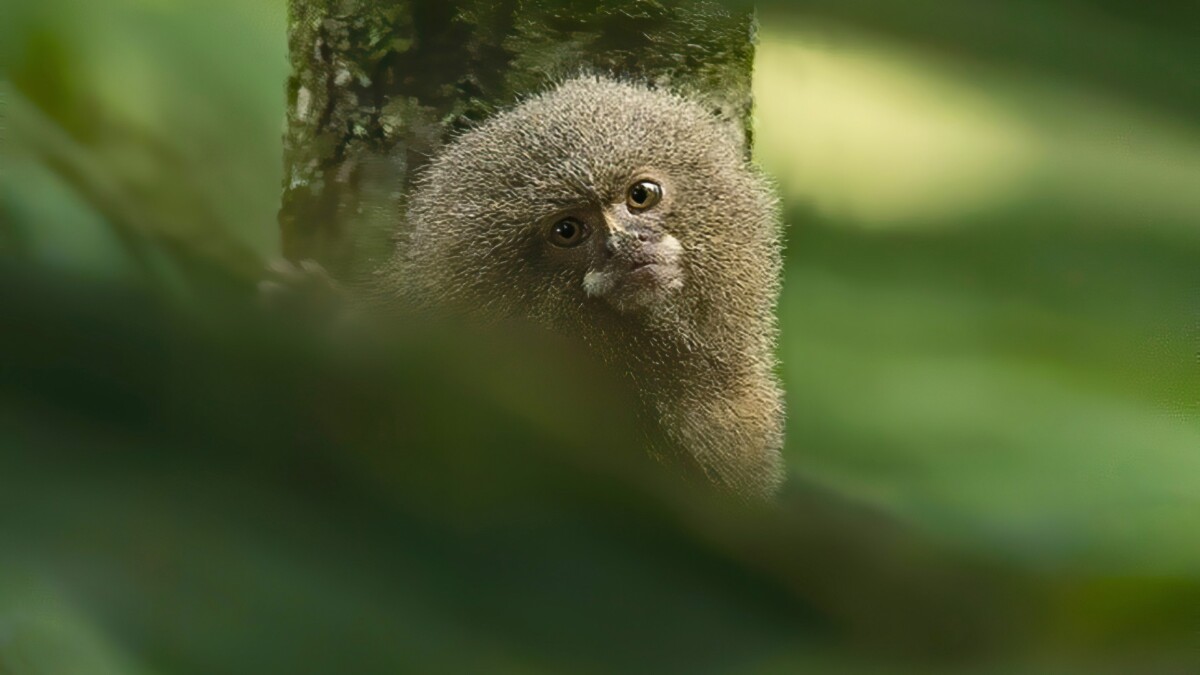
The pygmy marmoset is the smallest monkey in the world, with adults weighing between 100 to 150 grams and measuring about 12 to 15 centimeters in body length, excluding the tail, which is roughly 17 to 23 centimeters long. It has a tawny or agouti-colored coat with a ringed tail and a mane of longer hair around its head. Its small size and dexterous limbs make it well-suited to life in the treetops of the Amazon rainforest. The pygmy marmoset has large incisors, which it uses to gouge tree bark to feed on sap and gum.
Habitats & Distribution
The pygmy marmoset is native to the rainforests of the western Amazon Basin. It is found in countries like Brazil, Colombia, Ecuador, Peru, and Bolivia. These monkeys live in dense, tropical rainforests, particularly in floodplain and riverine areas where they can find abundant food sources.
Behaviours & Reproduction
Pygmy marmosets are highly social and live in family groups of 2 to 9 individuals. They communicate using a variety of vocalizations, body postures, and facial expressions. Their diet primarily consists of tree sap, gum, and resin, which they extract using their specialized teeth. They also eat insects and small fruits. Breeding can occur year-round, with females typically giving birth to twins after a gestation period of about 140 days. Both parents, as well as other group members, participate in caring for the young.
Diet
Pygmy marmosets primarily feed on tree sap, gum, and resin.
Colors
Tawny, brown, gray, and yellowish tones
Fun Facts
Pygmy marmosets can rotate their heads 180 degrees, allowing them to easily look for predators or locate food.
They have an intricate system of vocal communication, with different calls for different situations.
These monkeys can leap over 5 meters (16 feet) between trees despite their small size.
They often use their tails for balance when navigating the treetops.
Pygmy marmosets exhibit cooperative care, with older siblings helping to care for the young.
They are known for their rapid and agile movements, making them difficult to spot in the wild.
Conservation Status & Efforts
The pygmy marmoset is currently listed as Least Concern on the IUCN Red List. However, they face threats from habitat destruction due to deforestation and the illegal pet trade. Conservation efforts focus on habitat preservation, enforcing laws against wildlife trade, and raising awareness about the ecological importance of these tiny primates.

